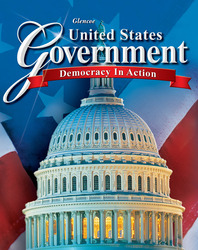United States Government: Democracy in ActionChapter 20:
Taxing and SpendingStudent Web Activity Lesson PlansIntroduction
The federal budget is used to predict and control revenue and spending. It also expresses the president's policies and priorities. The federal budget is just like a household budget, however, in that overspending leads to deficits. All annual deficits added together equal the national debt. Over the years, economists and other concerned citizens pose the same questions: How much debt is acceptable? How can we reduce the amount we owe? In this activity, students will analyze how much the debt has grown, and various opinions on how to reduce the debt. Lesson Description
Students will analyze a Web site that discusses budget deficits and the national debt. They will answer four questions, and then identify whether their top priorities match other Americans' priorities about federal spending. Instructional Objectives
- Learners will identify statistics about the federal deficit and national debt.
- Learners will analyze graphs showing the federal debt and budget priorities.
- Learners will speculate on their priorities for federal spending.
|
Student Web Activity Answers
- $482 billion
- $9.5 trillion
- It increased from about $1.8 trillion in 2000 to $2.3 trillion in 2007.
- The options include lowering taxes and keeping government's role small; balancing the budget and reforming entitlement programs; addressing long-delayed problems by ignoring the deficit and/or taxing the wealthy and cutting back on corporate tax breaks.
- Students' priorities will differ. Remind them to include reasons for their choices.
|
 | 




